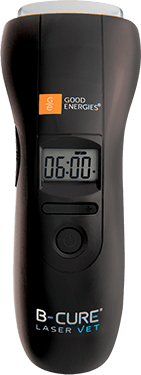Protecting Your Pup: A Guide to Safe Home Laser Therapy for Dogs
As pet owners, we want to do everything we can to ensure the health and happiness of our furry friends. When it comes to treating conditions like arthritis, joint pain, and inflammation, laser therapy has become an increasingly popular option. While many pet owners take their dogs to veterinary clinics for laser therapy treatments, it is also possible to administer the therapy at home with a device designed for this purpose. However, it is important to take precautions to ensure that the treatment is safe and effective. In this guide, we will explore the benefits of home laser therapy for dogs and provide tips for safely administering the treatment.

Benefits of Home Laser Therapy for Dogs
There are many benefits to using laser therapy for dogs, including pain relief, reduced inflammation, and improved mobility. Home laser therapy can be especially beneficial for dogs who have difficulty traveling or who become anxious in clinical settings. Additionally, administering laser therapy at home can provide pet owners with greater flexibility and control over their dog’s treatment schedule.
Choosing the Right Laser Therapy Device for Your Dog
Before starting home laser therapy, it is important to choose the right device for your dog. There are many different laser therapy devices available on the market, and not all of them are suitable for home use. Look for a device that is specifically designed for dogs and that has been approved by the FDA for veterinary use. Additionally, make sure that the device has adjustable settings, so you can customize the treatment to your dog’s specific needs.
Preparing for Laser Therapy at Home
Before starting laser therapy at home, it is important to prepare your dog and your home. Make sure that your dog is comfortable and relaxed, and that you have all the necessary equipment on hand. This includes the laser therapy device, a timer, and any accessories that may be required for the specific device you are using. It is also a good idea to create a calm and quiet environment for your dog, free from distractions.
Preparing for laser therapy at home is crucial for ensuring that the treatment is safe and effective for your dog. Here are some steps you can take to prepare:
- Choose the right laser therapy device: There are many different types of laser therapy devices available for home use, and it is important to choose one that is appropriate for your dog’s needs. Consult with your veterinarian to determine the type of device that is best for your dog’s condition.
- Read the instructions carefully: Before using the laser therapy device, read the instructions carefully to ensure that you understand how to use it properly. Pay close attention to any safety precautions and make sure you follow them.
- Prepare your dog: Make sure your dog is comfortable and relaxed before starting the treatment. Choose a quiet and calm area for the treatment and consider giving your dog a treat or some positive reinforcement to help them associate the treatment with a positive experience.
- Get the timing right: Laser therapy treatments typically last between 2-10 minutes, depending on the device and the condition being treated. Use a timer to ensure that you administer the treatment for the appropriate length of time.
- Protect yourself: Laser therapy devices emit powerful beams of light, and it is important to protect your eyes and skin from exposure. Wear protective eyewear and make sure you do not shine the laser on your own skin.
By taking these precautions and preparing properly, you can ensure that laser therapy is safe and effective for your dog at home.
Administering Laser Therapy Safely
When administering laser therapy at home, it is important to take precautions to ensure your dog’s safety. This includes wearing protective eyewear to prevent damage to your own eyes and avoiding shining the laser directly into your dog’s eyes. Additionally, it is important to follow the manufacturer’s instructions for use and to avoid using the device on areas of your dog’s body where cancer is present.
It is also important to start with a low power setting and gradually increase the intensity, following the recommended treatment times and frequencies for your dog’s specific condition. Avoid overtreating the same area, as this can cause burns and discomfort. Keep a record of each treatment session, including the area treated, the time and power settings used, and your dog’s response to the treatment. This can help you track progress and adjust the treatment plan as needed.
Finally, if you are unsure about administering laser therapy at home or if your dog’s condition is severe or worsening, it is important to consult with a veterinarian. They can provide guidance on the best course of treatment for your dog’s specific needs and can also monitor their progress over time.
By following these safety precautions and administering laser therapy correctly, you can provide a safe and effective treatment option for your furry friend from the comfort of your own home.
Frequency of Treatment
The frequency of laser therapy treatments will depend on your dog’s specific condition and needs. In general, it is recommended to start with shorter treatment sessions and gradually increase the duration and frequency of treatment as your dog becomes more comfortable with the process. It is important to follow your veterinarian’s advice and to monitor your dog’s response to the treatment.
Final Thoughts
Home laser therapy can be a safe and effective way to treat a variety of conditions in dogs, including arthritis, joint pain, and inflammation. However, it is important to take precautions to ensure your dog’s safety and to choose the right device for your pet’s specific needs. With proper preparation and administration, laser therapy can be a valuable tool in promoting your dog’s long-term health and happiness.




